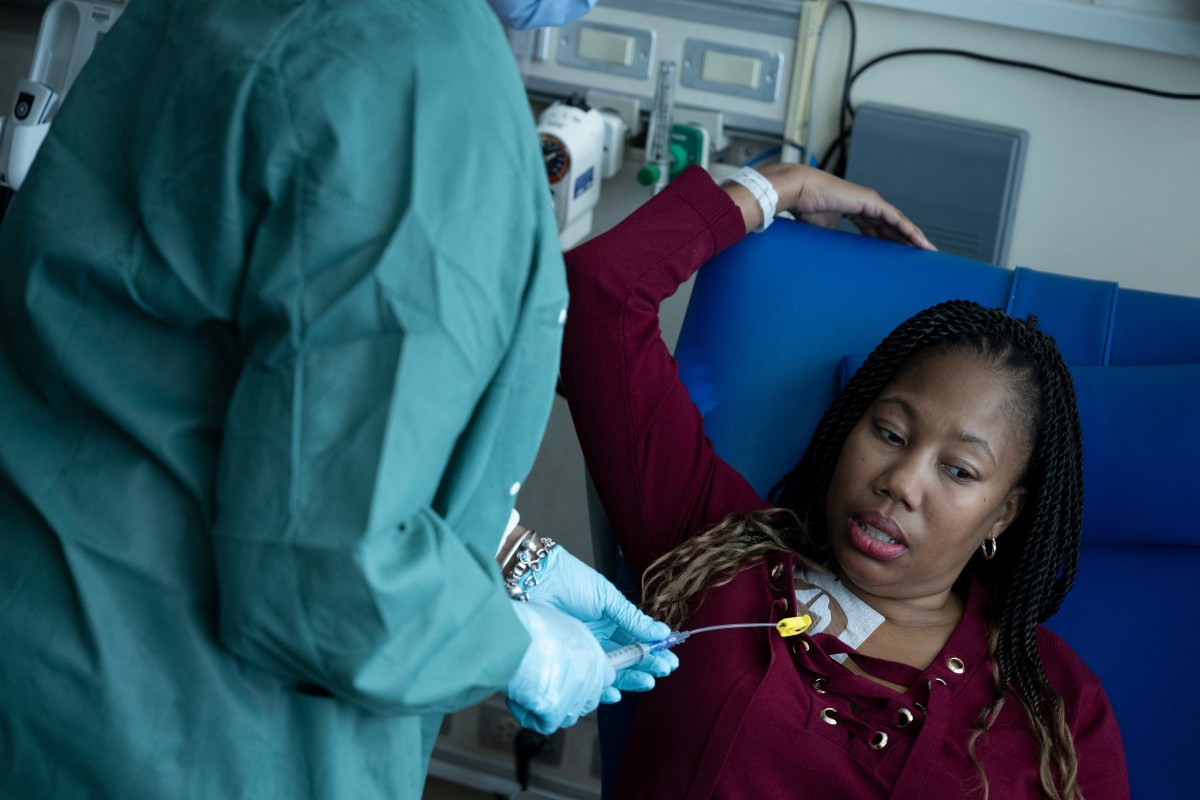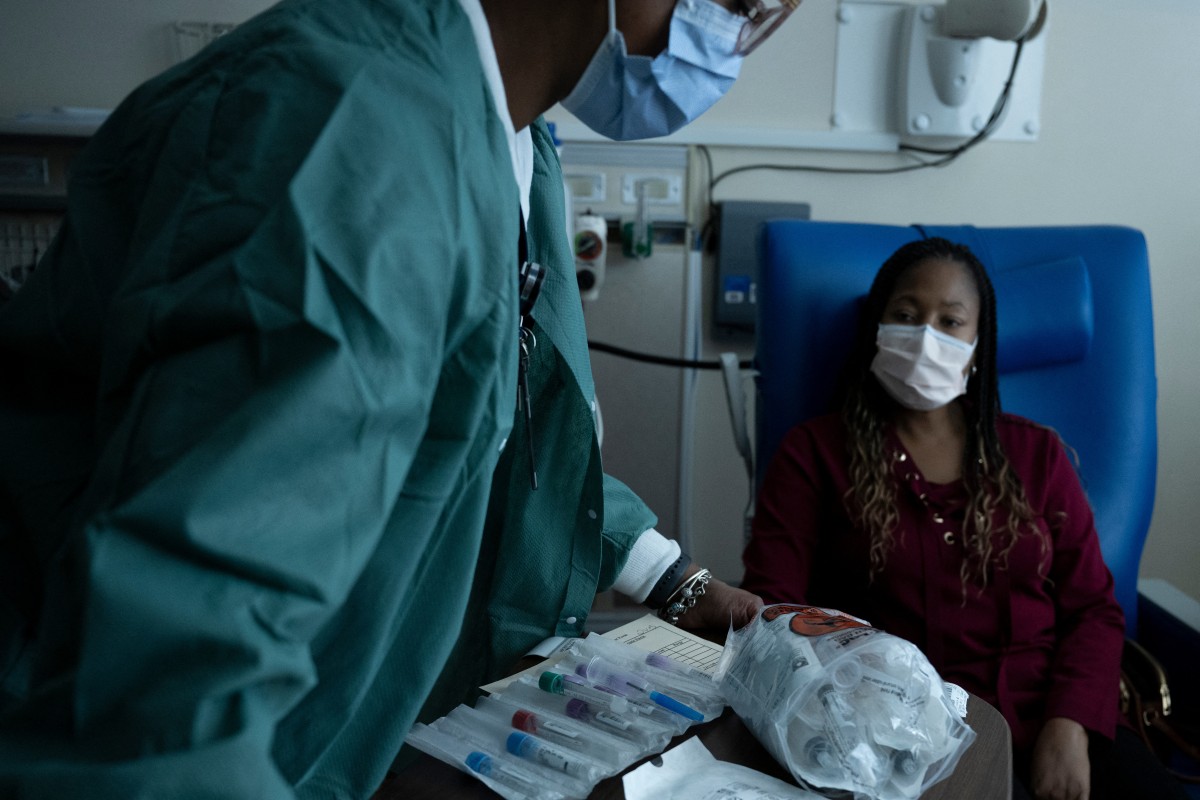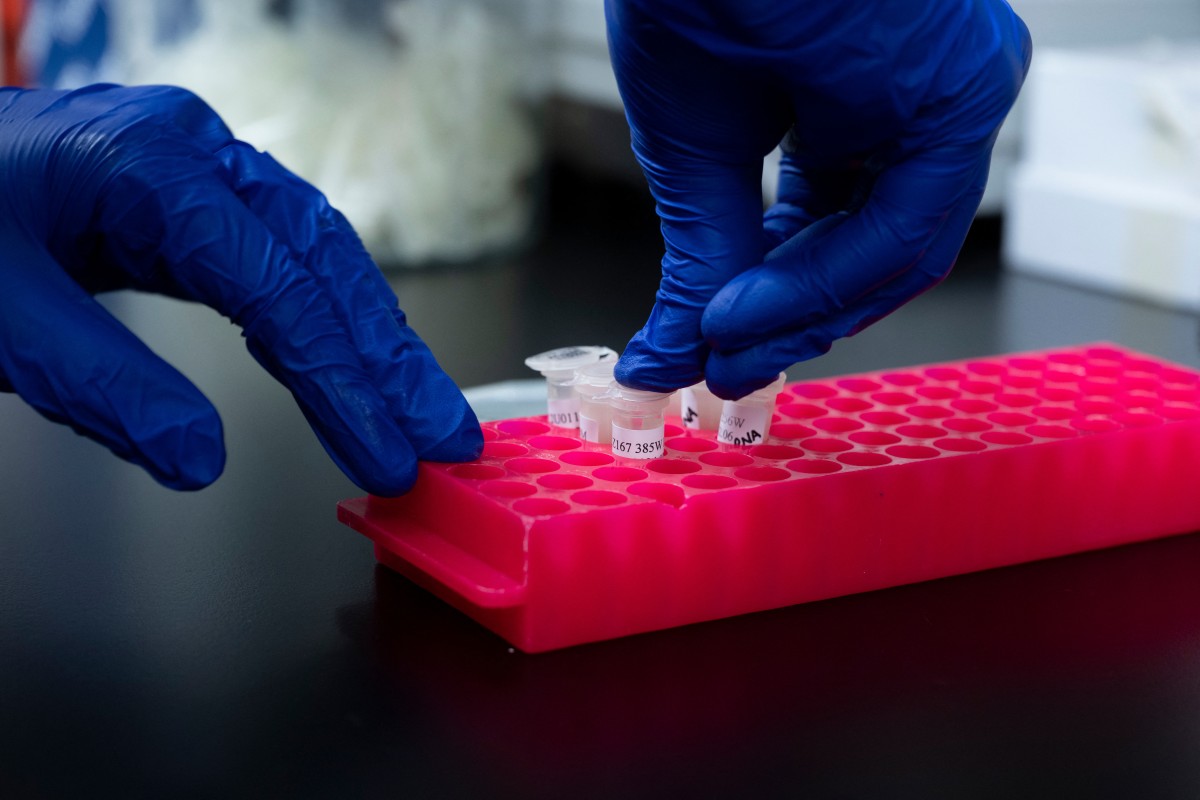The two former patients hope to raise awareness of these gene therapies, which have recently been licensed by US health authorities, so that others can use them.
But its high cost — up to $3.1 million per person — could limit accessibility.

Prejudgments
Tisha Samuels was born in 1982, just before newborn screenings began for sickle cell anemia, a genetic disease that affects about 100,000 people in the United States and 20 million people worldwide.
It mainly affects black people. Scientists say one reason for this is that the sickle cell trait protects against malaria.
Patients with sickle cell disease have a mutation that affects hemoglobin — an oxygen-carrying protein in red blood cells. The red blood cells then take on a sickle shape, restricting blood flow and oxygen delivery.
The potential consequences are tragic, and include anemia, pain attacks, organ damage, and even premature death.
Tisha Samuels was diagnosed at the age of two. At seven years old, she suffered a serious bout of anemia, and at thirteen, a stroke forced her to undergo monthly blood transfusions.
According to her, the “prejudice of black children who came to the hospital to say they were in pain” made her wait until things got out of control before taking action.
As she became a young adult, Tisha lost a friend who was a “sickle cell warrior,” who often ended up in the same hospital where she was being treated.
Tisha continued her studies at the prestigious Howard University, hoping to become a doctor, but she was forced to drop out due to her illness.
She says that the disease forced her to “give up on dreams.” After marrying young, Tisha needed eight hours of injections every night.

“Back to Life”
In 2018, her life took a new turn: she became one of the first to receive an experimental treatment at the time.
The treatment, currently marketed as Lyfgenia, uses a harmless virus to carry a healthy copy of the gene that produces hemoglobin into cells.
Doctors first collect the patient’s stem cells. Then comes the difficult part, which is removing the stem cells from the patient’s spinal cord through chemotherapy, making room for the modified cells.
Tisha Samuels lost her hair and was hospitalized with a nosebleed that lasted 16 hours. It takes months for platelets to return to normal.
Then the patient regained her energy. “It’s like coming back to life,” she says. “You have a new life. You wonder what we should do with it?”
Tisha resumed her studies and obtained her degree.
The organization “Journey to ExSCellence” was created to educate the black American population about this type of treatment.
Each patient participating in the clinical trial undergoes 15 years of follow-up.
Years of struggle
Jimmy Olaguer, 38, has a similar background.
His first memories of his illness date back to when he was eight years old.
At the time, he was playing football in Nigeria, his native country, but he had to stop every five minutes to rest and drink.
“I asked my mother, ‘Why am I different?’” he recalls.
His parents sent him to live with his aunt in New Jersey, United States, where health care was better, but he had a difficult childhood.
He failed to complete his studies and had to have his gallbladder removed and had a heart attack. At his worst, he spent 80 percent of his time in bed.
It helped that he moved to Atlanta, where it is warmer, as is the case for many sickle cell patients. Then, in 2019, he heard about a clinical trial using CRISPR molecular scissors. After registering, he received a “magical” message informing him of his acceptance of this experience.
Thanks to the modified stem cells he receives with this treatment, called Casgevy, Jamie Olaguer is now “living the dream.”
He became a father of three children, thanks to in vitro fertilization, and runs several small businesses.

Olaguerre also seeks to popularize this treatment, especially in Africa, where access to it is still a distant dream.
There is still uncertainty about whether these gene therapies will be covered by private health insurance.
But the public Medicaid program announced that it will cover these costs starting next year.
ظهرت في الأصل على www.annahar.com

